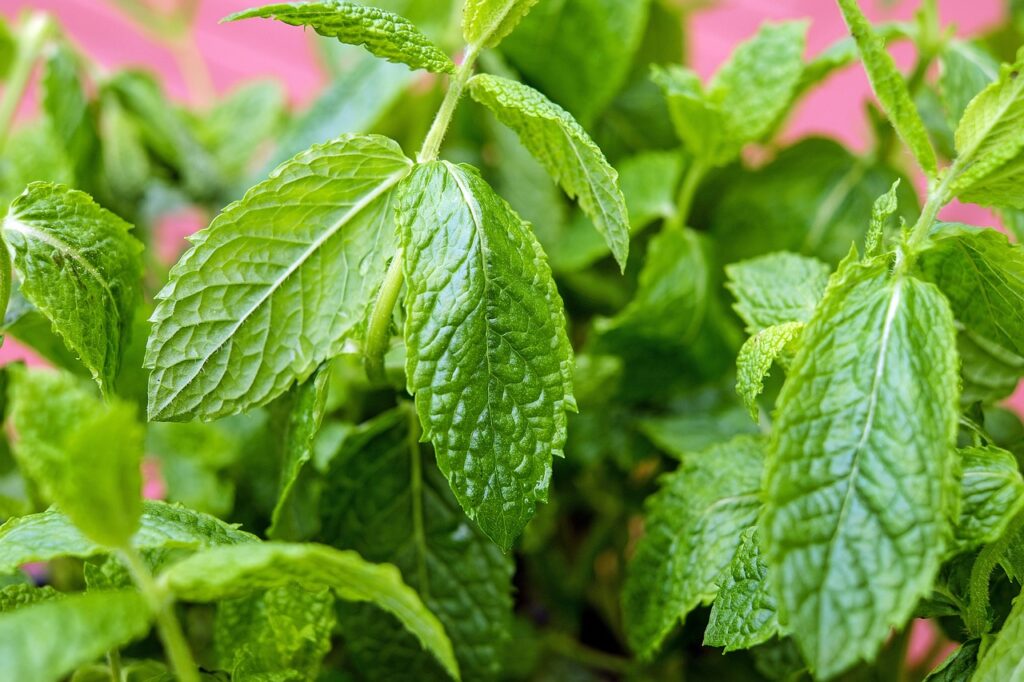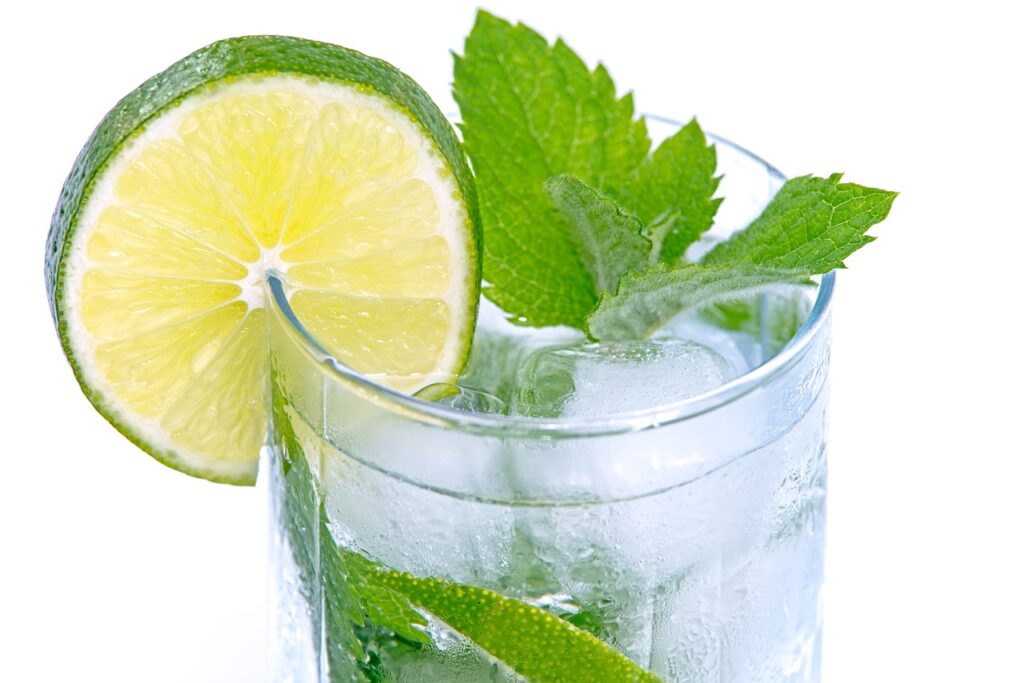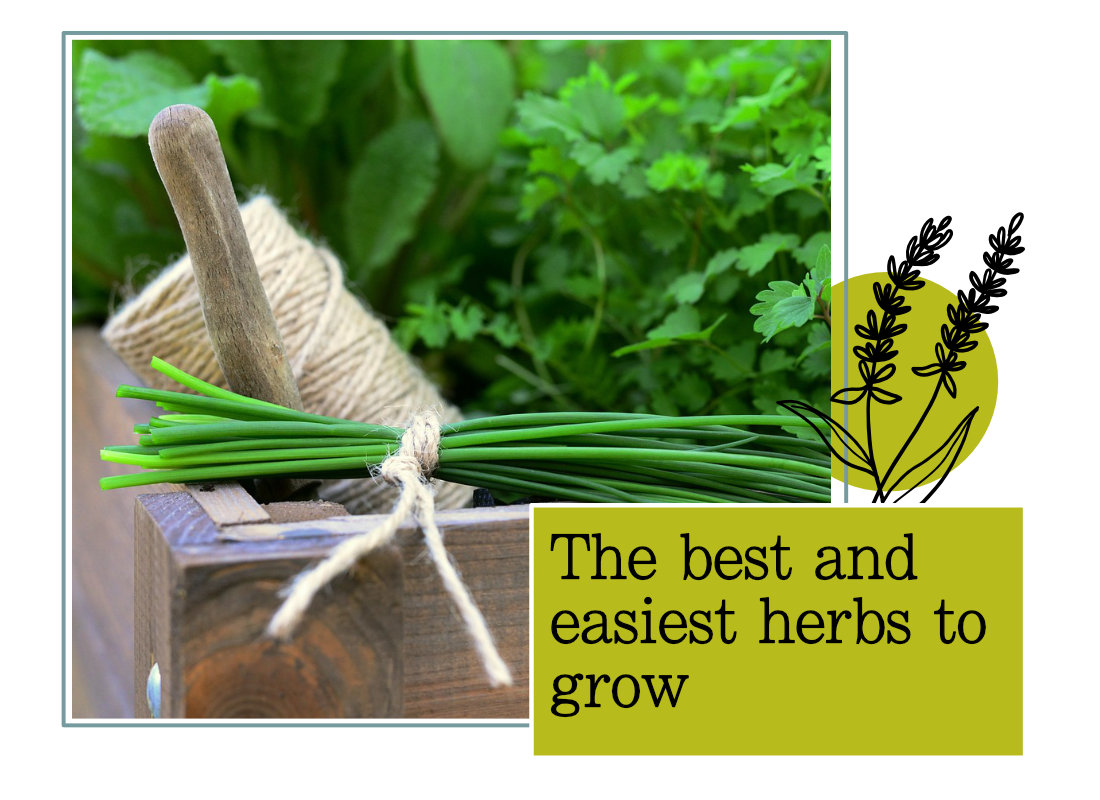The best and easiest herbs to grow
The best and easiest herbs to grow are herbs you will have many uses for and will be easy to maintain.
There are so many varieties of herbs and each has it’s own unique flavour and uses. Most small herb plants can be bought from garden centres or supermarkets and the ones listed below are all readily available.
Herbs are so versatile, they can be planted in pots, planters or containers.
Many herbs are great companions to be planted in the garden amongst flowers and vegetables, helping with common growing problems.
Gardeners World has a helpful article about companion planting advising which herbs suit which plants and the benefits of planting together.
This post will guide you through a few common herbs, the best way to plant and ideas what to do with those lovely fragrant herbs you grow!

Rosemary
Rosemary is an evergreen shrub with fragrant leaves. Originally from the mediterranean, Rosemary is hardy and can tolerate temperatures down to -10°C so will survive most UK winters!
Easy to grow and needs little maintenance once established. Just clip it back every year to keep it compact.
It is best to replace Rosemary every 5 years with a new plant. They are very easy to grow from cuttings so you could take cuttings from your original and create a nice new one.
Rosemary is a type of sage so grows well with Lavender and Thyme. In spring and summer Rosemary has small mauve, blue, pink or white flowers making it an attractive herb.
Growing
Rosemary prefers a warm spot with free draining soil.
It is best to plant in spring but can be planted through to autumn.
Grows well in large containers with free draining soil – so remember to put holes in your containers!
They don’t need much care just watering (but don’t let it get waterlogged) add some mulch in winter to protect from frost.
Uses
Rosemary is evergreen so can be harvested all year round but tastes better in summer.
It can be used as a cooking herb in loads of dishes adding a wonderful aromatic flavour. Popular with lamb and delicious in breads.
Rosemary can be dried, just hang up sprigs in a warm, dark, ventilated area. When fully dried strip off the leaves and store in an air tight container.

Basil
Basil has a sweet, strong aroma and flavour and adds a wonderful mediterranean taste to food.
Compact plants with attractive foliage, it likes warm conditions so great for planting indoors on a windowsill.
Can be planted outside but It isn’t hardy so won’t withstand cold weather. So is best positioned in warm sheltered spots in the garden or in a greenhouse.
Growing
Basil can be grown from seeds or bought as plants. It can be grown indoors or potted outside in late spring or early summer.
Water regularly and keep in a warm spot. Harvest regularly to keep bushy.
Uses
Basil can be harvested throughout summer. Its leaves can be used as a herb in many dishes.
A great addition to sauces, pizzas, pasta dishes or to make pesto. Use over salads or on tomato and mozerala drizzled with oil to add a lovely flavour.

Thyme
Thyme is another evergreen shrub. Like rosemary, thyme is easy to grow in a sunny spot with free draining soil.
There are many varieties of thyme and in summer grow clusters of small flowers in mauve, pink or white.
Growing
Thyme is best planted during spring or early summer.
Once planted they are quite hardy and will not need much looking after, just trimming annually and watering during hot periods.
If planted in containers move them to a sheltered spot in winter to protect the from getting waterlogged.
Uses
Thyme is evergreen so can be harvested all year round but tastes best in spring and summer.
Thyme is a great herb for many dishes especially stews and meat dishes and is the key ingredient in bouquet Garni and herbs de province.
It can be dried, just hang up in a warm, dry, ventilated area and store in an air tight container.
The flowers are also edible!

Tarragon
Tarragon is a perennial herb with an aromatic flavour. There are two types of tarragon, Russin tarragon and French tarragon. French tarragon has a stronger flavour but the Russian tarragon is a lot easier to grow.
Growing
French tarragon – has a stronger, peppery flavour with aniseed notes. It likes full sun and free draining soil. It is not hardy and must be kept frost free so needs to be kept in a greenhouse over the winter.
French tarragon can’t be grown from seeds so has to be grown from plants or cuttings.
Russian tarragon – Not as strong in flavour but more hardy than French tarragon.
Copes well with most conditions and needs little maintenance.
It can be bought as seeds or plants.
Uses
Tarragon is a very versatile herb and is popular in many chicken dishes and sauces.
Can be dried by hanging in a warm, dry, ventilated area then stored in an air tight container.
It can also be used to flavour vinegar, mustard, salad dressing and oils.

Mint
Mint is a perennial herb with very fragrant leaves and tiny purple, pink, or white flowers. It is one of the best and easiest herbs to grow and doesn’t need much maintenance.
Just water regularly and harvest often.
It is a herbaceous perennial so it dies back over winter, then comes to life again in spring. It can last for many years and cuttings can easily be taken to create new plants.
Growing
There are many different types and can be grown in sun or light shade in most soil types.
As mint grows and spreads quickly it is best being planted in a large container. Plant small plants in spring or early summer in a warm spot in free draining soil.
Mint does look after itself, it just needs regular watering and harvesting to keep it bushy.

Uses
It is best to harvest mint regularly to encourage growth.
Mint can be used in a number of dishes, hot or cold, sweet or savoury! For some ideas for mint recipes bbcgoodfood has loads to choose from.
Can be added to salads or scattered over vegetables. Made into a mint sauce or added to oils. Mint is a tasty versatile herb.
Fantastic for adding to summer drinks or cocktails.
Can also be added to tea and for many medicinal purposes.
Mint dies down during the winter months, so freeze your summer harvested leaves in ice cubes so you will have fresh mint all year round!
Growing herbs
Adding herbs to your garden is so beneficial, they add wonderful aromas and having fresh herbs to hand is fantastic for adding flavours to dishes.
As well as all the practical uses for herbs, they are also very attractive. They look great planted in containers or pots, especially when grouped together.
Use wooden or slate plant markers, not only will these help you to identify each herb they will add character to your herb garden.
Decorated pots or wooden or vintage containers look great with herbs planted in them. A wooden crate with small terracotta pots will be easy to maintain and will add rustic charm.
Remember to regularly harvest your herbs to get the most out of them and to keep your plants healthy. Freeze or dry additional herbs to use during the winter months, giving you a year round supply!


One thought on “The best and easiest herbs to grow”